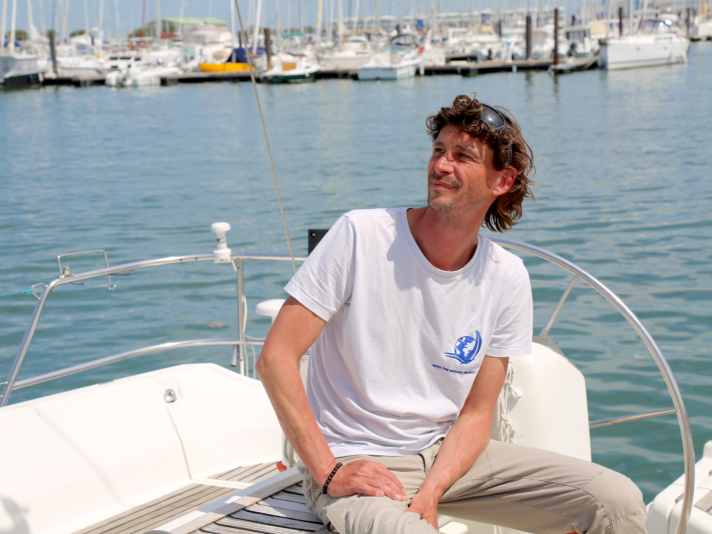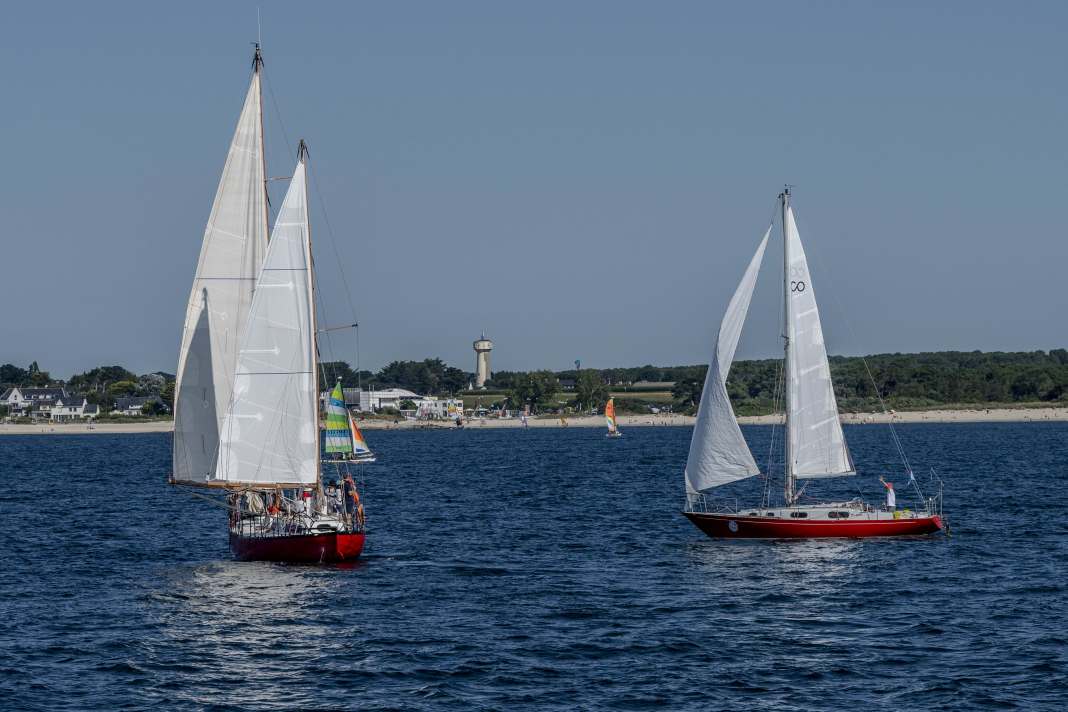





It is 18 March 1969 and a tanker is lying in the roadstead in the shadow of Table Mountain, a few nautical miles south of Cape Town. The sun is shining and the water is calm. A twelve-metre-long steel ketch with a red hull and the name "Joshua" on the white deck approaches the ship. Clack! The man on the sailing boat shoots something up to the bridge with a slingshot. It's a message that flies up there and contains a request to pass it on to the British "Sunday Times":
Dear Robert, we rounded the horn on 5 February. Today is the 18th of March. I am continuing my journey to the islands of the Pacific Ocean without a stopover because I am happy at sea and perhaps also to save my soul."
The sender of the message and the man on the red two-master is the Frenchman Bernard Moitessier. At that time, he had already sailed around the world once. As a participant in the Sunday Times Golden Globe Race, the first non-stop single-handed race around the world, he had crossed his course line days earlier. However, instead of sailing back to Plymouth in England to win the race, he continued his journey to Polynesia, forgoing certain victory - and making sailing history.
Moitessier's wasted victory: a classic of sailing literature
Moitessier, who preferred freedom at sea to victory and the "pressure of civilisation" on land, became an inspiration for many in the decades that followed. His later published book about the voyage became a classic of sailing literature and his "wasted victory" remains a symbol of a freedom that is orientated towards the rhythm of the sea and one's own intuition to this day.
To revive this spirit of freedom and celebrate the 50th anniversary of the voyage, Franco-American Guy Bernardin created the Longue Route. This is not a regatta in the classic sense, but rather an adventure trip among like-minded people. Participants sail around the three capes of the world in the footsteps of Moitessier without support or stopovers. There is no timekeeping, no prizes and only a few rules. Instead, it's all about realising the dream of freedom at sea.
Start of the second Longue Route in August 2024
And for the second time: after the premiere in 2018, six sailors once again set off around the world in mid-August 2024. The "Joshua", Moitessier's legendary sailing ship, was also at the start in Lorient. Among the participants is the exceptional German sailor Susanne Huber-Curphey. She started in July with her "Nehaj" in the Azores and leads the field.
More about the Longue Route:
Bruno Tréca, co-organiser of the Longue Route, is in regular contact with the sailors. Every day at 12 noon, they send their position and sometimes a message via an Iridium beacon. "They seem to feel at home. They are all passionate sailors. Of course, there are also difficult conditions - especially after the Cape of Good Hope," says Tréca.
First arrivals expected in April 2025
One participant, Alfonso Pascual, has already had to stop twice, according to Tréca, once because of a faulty watermaker and once because a wave destroyed his wind vane and solar panel. Another sailor, Eric Beauvilain, got off in Brazil because he had doubts about the stability of his boat. Apart from that, the five remaining participants are in good shape and happy to be at sea, says Tréca, who expects the first arrivals in March or April 2025 in Lorient, France - exactly the year in which Bernard Moitessier would have turned one hundred years old.

The Longue Route sailors at a glance
A total of five sailors are still taking part in the Longue Route 2024. You can find their current positions and short updates from on board at longue-route-2024. fr. The participants have different motivations for taking part in the Longue Route. We present them below:
Exceptional sailor from Germany
Susanne Huber-Curphey has dedicated her life to long-distance sailing. Between 2007 and 2011, she sailed solo around the world, alongside her husband Tony Curphey. In 2017, she became the first woman to complete a solo crossing of the Northwest Passage. In 2018, she took part in the Longue Route for the first time and became the second German woman to circumnavigate the world non-stop. Instead of finishing, she then continued her course eastwards - in the spirit of Moitessier (the YACHT reported). In 2019, she was unfortunately stranded off La Réunion. Now she's at it again.
On your own website Huber-Curphey writes a digital logbook. Her current location can also be viewed there.
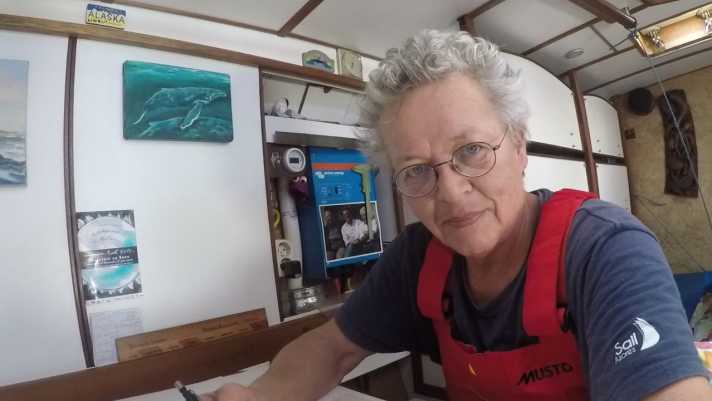
Second attempt with the same ship
Pierre-André Huglo, 64, and his GfK classic "Fresh Herring" are a well-rehearsed team. They already took part in the Longue Route in 2018. The northern Frenchman is particularly fascinated by single-handed sailing. He has already travelled more than 100,000 nautical miles alone. At the age of 14, he sailed alone for weeks in the English Channel. Later, with his own boat, the distances became longer. He was shipwrecked during an Atlantic crossing. But that didn't stop him from sailing in the Southern Ocean.
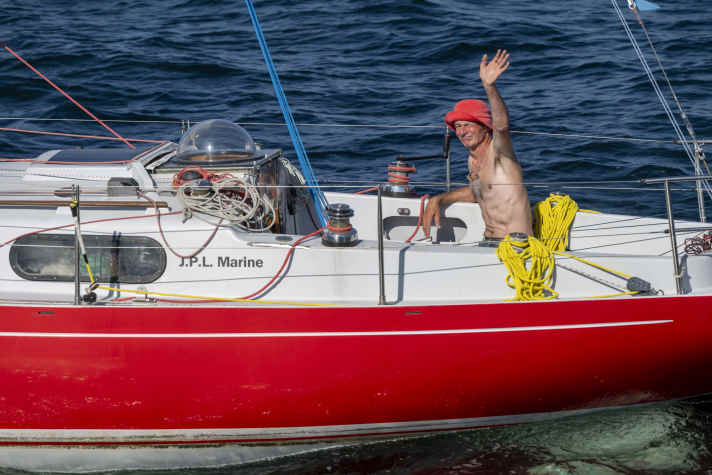
The first time in the Southern Ocean
Frédéric Switala, 55, is not only a keen sailor, but also earns his living from it. The Frenchman sells sailing boats that are specially equipped for circumnavigations. He himself has already crossed the Atlantic several times and sailed as far as Polynesia. However, he has never been to the Southern Ocean on his own keel, as he explains in an interview. This is set to change with his participation in the Longue Route.
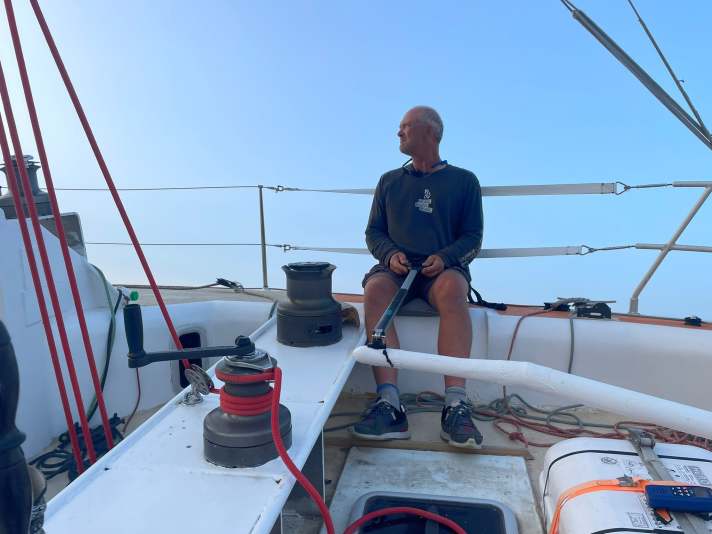
Non-stop with stopovers
Also Alfonso Pascual, 60, is an experienced long-distance sailor. For three years, he travelled alone on a Fantasia. In 2017, he sailed from France to Argentina with his family. The Frenchman has around 60,000 nautical miles in his wake and has often followed the routes of great sailors. For example, he sailed the route of Odysseus through the Mediterranean on a Mini 6.50. He is currently following the routes of Moitessier.
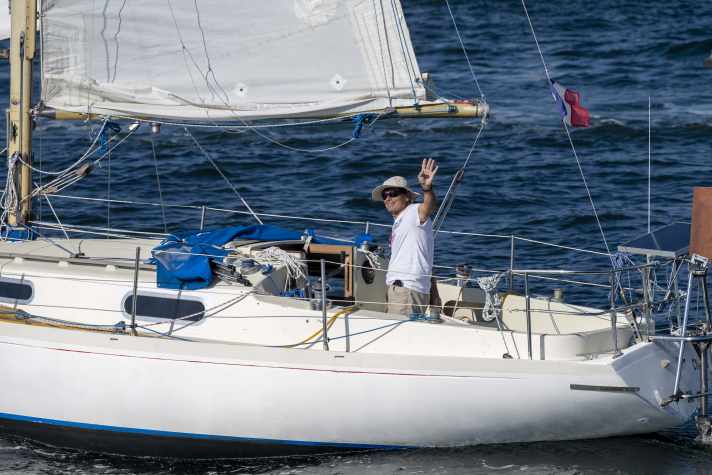
The only duo on the Longue Route
Eymeric Maiffredy, 46, is the only one who did not set off alone. He is accompanied by his cat "Maus". He also has extensive ocean experience: He has taken part in a total of six transatlantic races, some of them solo. In his youth, he was also a member of the technical team of Yves Parlier - a French sailor, multiple Vendée participant and winner of the Transat Jacques Vabre race.
